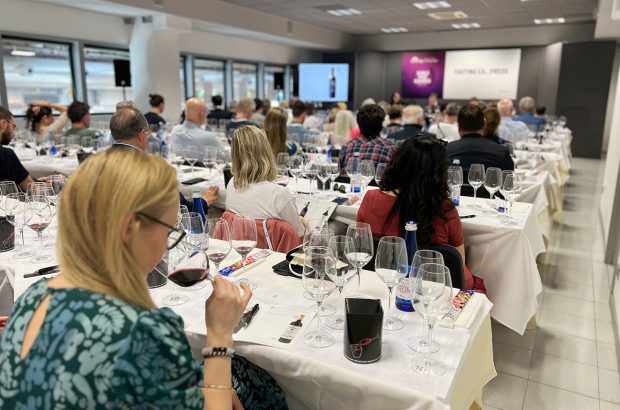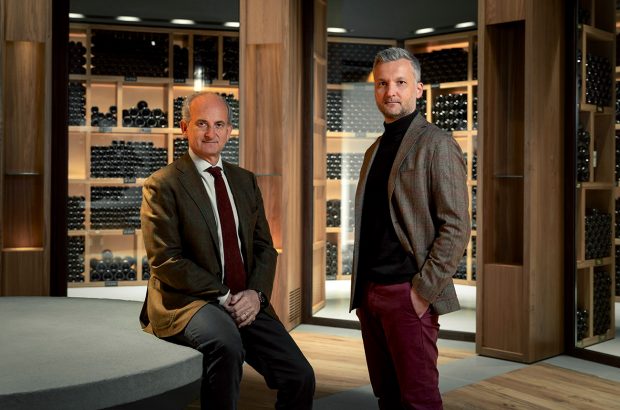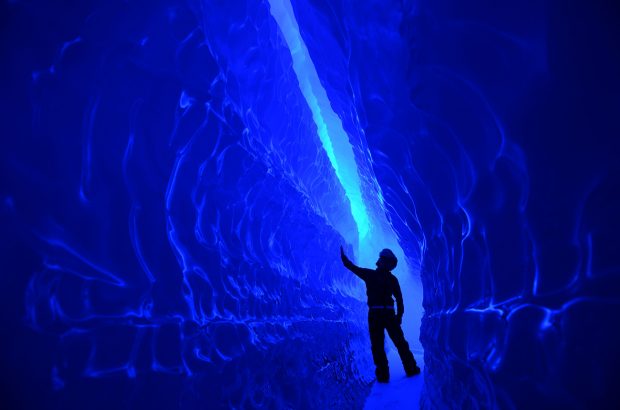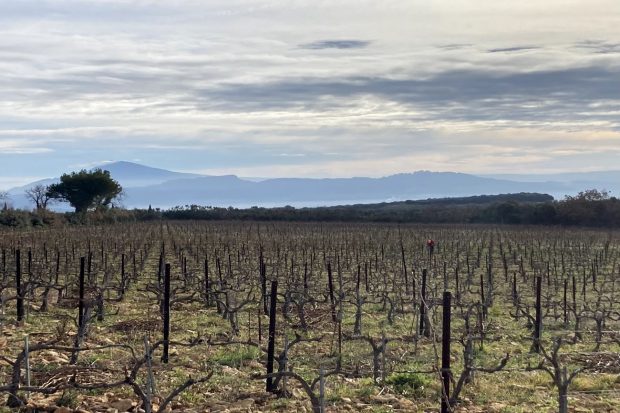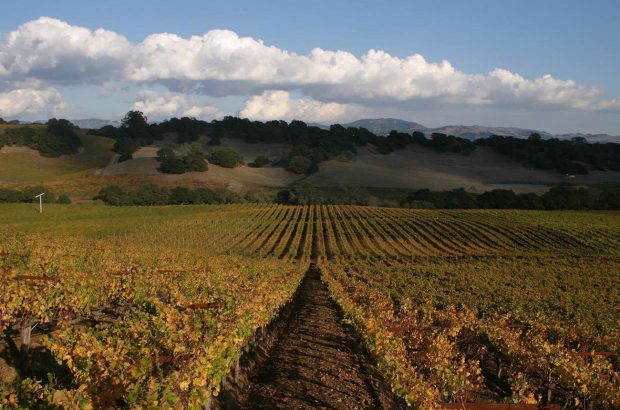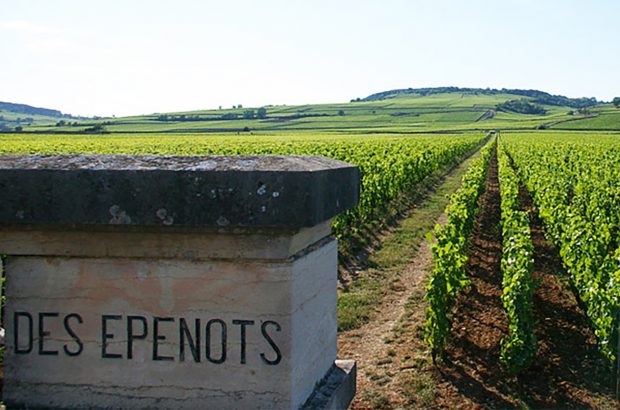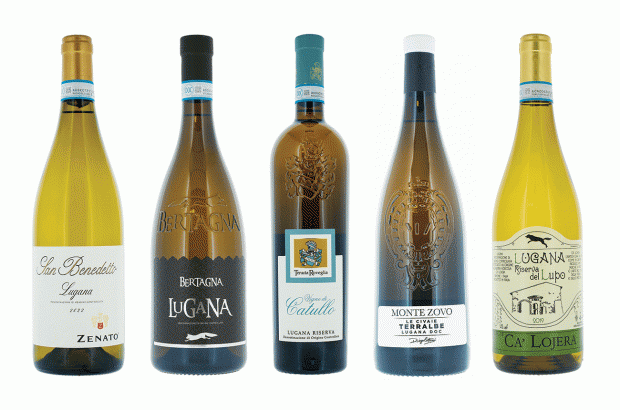Michaela Morris explores the differences between two of Masi's crus with tasting notes from four vintages spread across three decades...
To what extent can Amarone express terroir? That depends on your definition: when referring to Amarone, the ‘della Valpolicella’ – its region of origin – is typically dropped. Instead, it’s more commonly associated with the technique of drying grapes before vinification.
And surely no producer has invested more in studying this appassimento process than Masi. ‘Their technical and scientific research has benefitted the entire sector,’ said Veronafiere’s general director Giovanni Mantovani, as he introduced Masi’s 30th anniversary technical seminar at Vinitaly 2018.
Scroll down to see Michaela’s tasting notes & scores
{"content":"PHA+RXN0YWJsaXNoZWQgYnkgdGhlIEJvc2NhaW5pIGZhbWlseSBpbiB0aGUgbGF0ZSAxNzAwcywgTWFzaSBoYXMgYmVlbiBzdGVlcmVkIGJ5IFNhbmRybyBCb3NjYWluaSBmb3IgdGhlIGxhc3QgNDAgeWVhcnMuIER1YmJlZCAmIzgyMTY7TXIuIEFtYXJvbmUmIzgyMTc7IGZvciBoaXMgdGlyZWxlc3MgY2hhbXBpb25pbmcgb2YgdGhpcyB1bmlxdWUgSXRhbGlhbiB3aW5lLCBCb3NjYWluaSBmb3VuZGVkIHRoZSBNYXNpIFRlY2huaWNhbCBHcm91cCBpbiB0aGUgbWlkLTgwcy4gVGhlIHRlYW0sIGhlYWRlZCBieSBoaXMgc29uIFJhZmZhZWxlIEJvc2NhaW5pLCBleGFtaW5lcyBldmVyeXRoaW5nIGZyb20gaW5kaWdlbm91cyBncmFwZXMgYW5kIGFwcGFzc2ltZW50byB0byB5ZWFzdHMsIGZlcm1lbnRhdGlvbiBhbmQgYWdlaW5nLjwvcD4KPGgyPlRoZSB0YXN0aW5nPC9oMj4KPHA+4oCYVGhpcyB5ZWFyJiM4MjE3O3MgdGFzdGluZyBpcyBhIHN5bnRoZXNpcyBvZiB0aGUgbGFzdCB0aHJlZSBkZWNhZGVzLOKAmSBkZWNsYXJlcyBCb3NjYWluaS4gV2hpbGUgaGUgcHJlc2VudHMgd2luZXMgaGFya2luZyBiYWNrIHRvIDE5ODggdG8gZGVtb25zdHJhdGUgdGhlIGV2b2x1dGlvbmFsIGFyY2gsIEJvc2NhaW5pIGhhcyBhIGRvdWJsZSBhZ2VuZGEuPC9wPgo8cD7igJhBbWFyb25lIGlzIGEgc2ltdWx0YW5lb3VzIGV4cHJlc3Npb24gb2YgdGVjaG5pcXVlIGFuZCB0ZXJyb2lyLOKAmSBoZSBjb250aW51ZXMuIEEgdmVydGljYWwgY29tcGFyaW5nIE1hc2kmIzgyMTc7cyBWYWlvIEFybWFyb24gYW5kIE1henphbm8gY3J1cyBpbGx1c3RyYXRlcyBoaXMgcG9pbnQuPC9wPgo8cD48ZGl2IGNsYXNzPSJhZC1jb250YWluZXIgYWQtY29udGFpbmVyLS1tb2JpbGUiPjxkaXYgaWQ9InBvc3QtaW5saW5lLTIiIGNsYXNzPSJpcGMtYWR2ZXJ0Ij48L2Rpdj48L2Rpdj48L3A+CjxoMj5UaGUgY3J1czwvaDI+CjxoMz48c3Ryb25nPlZhaW8gQXJtYXJvbjwvc3Ryb25nPjwvaDM+CjxwPlZhaW8gQXJtYXJvbiByZXByZXNlbnRzIE1hc2kmIzgyMTc7cyBjb2xsYWJvcmF0aW9uIHdpdGggdGhlIENvbnRpIFNlcmVnbyBBbGlnaGllcmkgZmFtaWx5LiBUaGVpciBwcm9wZXJ0eSBpcyBpbiBTYW50JiM4MjE3O0FtYnJvZ2lvIGRpIFZhbHBvbGljZWxsYSwgb24gdGhlIHdlc3Rlcm4gZWRnZSBvZiB0aGUgY2xhc3NpY28gem9uZSBjbG9zZSB0byBMYWtlIEdhcmRhIGFuZCBpdHMgbW9kZXJhdGluZyBlZmZlY3QuIFRoZSAxNWhhIHNvdXRod2VzdC1mYWNpbmcgdmluZXlhcmQgc2l0cyBvbiBsaW1lc3RvbmUgYW5kIGNsYXkgc29pbCBiZXR3ZWVuIDIzMC0yNjUgbWV0cmVzIGFib3ZlIHNlYSBsZXZlbC48L3A+CjxoMz48c3Ryb25nPk1henphbm88L3N0cm9uZz48L2gzPgo8cD5GdXJ0aGVyIGVhc3QsIGluIHRoZSBOZWdyYXIgVmFsbGV5LCBNYXp6YW5vIGlzIE1hc2kmIzgyMTc7cyA3aGEgY3J1LiBXZXN0LWZhY2luZyBvbiBwb29yIHNvaWwgb2YgbWFybHkgbGltZXN0b25lLCBzY2hpc3QgYW5kIGJhc2FsdCwgaXQgcmlzZXMgZnJvbSAzNTAtIDQxNSBtZXRyZXMgb2YgYWx0aXR1ZGUuIFRoaXMgY29vbGVyIHNpdGUgaGFzIGEgdGVuZGVuY3kgdG8geWllbGQgcmVsYXRpdmVseSBhdXN0ZXJlIHdpbmVzLjwvcD4KPGhyPgo8aDI+VGhlIHRlY2huaWNhbCBiaXRzPC9oMj4KPHA+VGhlIGRyeWluZyByb29tcyBmb3IgZWFjaCB3aW5lIGFyZSBsb2NhdGVkIGluIHRoZWlyIHJlc3BlY3RpdmUgdmluZXlhcmRzLCBwbGF5aW5nIGEga2V5IHJvbGUgaW4gdGhlIGNoYXJhY3RlciBvZiB0aGUgd2luZXMuPC9wPgo8ZGl2IGNsYXNzPSJhZC1jb250YWluZXIgYWQtY29udGFpbmVyLS1tb2JpbGUiPjxkaXYgaWQ9InBvc3QtaW5saW5lLTMiIGNsYXNzPSJpcGMtYWR2ZXJ0Ij48L2Rpdj48L2Rpdj4KPHA+QXMgVmFpbyBBcm1hcm9uIGlzIG1vcmUgaHVtaWQsIG5vYmxlIHJvdCB3aGljaCBmb3JtcyBpbiB0aGUgdmluZXlhcmQgZGV2ZWxvcHMgZnVydGhlciBkdXJpbmcgdGhlIGRyeWluZyBwcm9jZXNzLiBCeSB0aGUgZW5kLCBncmFwZXMgYXJlIHVzdWFsbHkgYm90cnl0aXMtYWZmZWN0ZWQgYmV0d2VlbiAxMC0gMTUlLCBpbXBhcnRpbmcgYSB2aXNjb3VzIGdseWNlcm9sIG1vdXRoZmVlbC48L3A+CjxwPkluIE1henphbm8sIGhvd2V2ZXIsIOKAmHRoZSBkZXZlbG9wbWVudCBvZiBib3RyeXRpcyBkdXJpbmcgYXBwYXNpbWVudG8gaXMgbGltaXRlZCBiZWNhdXNlIHRoZSBjbGltYXRlIGlzIG11Y2ggd2luZGllcizigJkgQm9zY2FpbmkgZXhwbGFpbnMuPC9wPgo8ZGl2IGNsYXNzPSJhZC1jb250YWluZXIgYWQtY29udGFpbmVyLS1tb2JpbGUiPjxkaXYgaWQ9InBvc3QtaW5saW5lLTQiIGNsYXNzPSJpcGMtYWR2ZXJ0Ij48L2Rpdj48L2Rpdj4KPHA+V2hpbGUgYm90aCBibGVuZCBDb3J2aW5hLCBDb3J2aW5vbmUsIFJvbmRpbmVsbGEgYW5kIE1vbGluYXJhLCBWYWlvIEFybWFyb24gc3BvcnRzIGEgaGlnaGVyIHBlcmNlbnRhZ2Ugb2YgTW9saW5hcmEgKDE1JSB1bnRpbCAyMDEwKSB0aGFuIE1henphbm8gKDUlKS4gVGhlIGZyZXNobmVzcyBNb2xpbmFyYSBjb250cmlidXRlcyBvZmZzZXRzIHRoZSBpbXByZXNzaW9uIG9mIHN3ZWV0bmVzcyB0aGF0IGNvbWVzIGZyb20gYm90cnl0aXMuPC9wPgo8cD5Xb29kIHJlZ2ltZXMgYXJlIHNpbWlsYXJseSBkaXZlcnNlLiBTaW5jZSB0aGUgOTBzLCBNYXp6YW5vIG1hdHVyZXMgaW4gNjAwLWxpdHJlIG9hayBiYXJyZWxzIHdoZXJlYXMgVmlhbyBBcm1hcm9uIGNvbnRpbnVlcyB0byBiZSBhZ2VkIGluIFNsYXZvbmlhbiBvYWsgYm90dGUgb2YgNy0yMCBoZWN0b2xpdHJlcy4gRnVydGhlcm1vcmUsIHRoZSBsYXR0ZXIgc2VlcyBhIGZvdXItbW9udGggcGFzc2FnZSBpbiBjaGVycnktd29vZCBjYXNrcywgd2hpY2ggYXJlIG1vcmUgcG9yb3VzIGFuZCBveGlkYXRpdmUgdGhhbiBvYWsuPC9wPgo8ZGl2IGNsYXNzPSJhZC1jb250YWluZXIgYWQtY29udGFpbmVyLS1tb2JpbGUiPjxkaXYgaWQ9InBvc3QtaW5saW5lLTUiIGNsYXNzPSJpcGMtYWR2ZXJ0Ij48L2Rpdj48L2Rpdj4KPGgyPkNvbXBhcmlzb25zPC9oMj4KPHA+VGhlIHNpZGUtYnktc2lkZSBjb21wYXJpc29uIGZlYXR1cmVkIHRoZSAxOTg4LCAxOTk1LCAxOTk3IGFuZCAyMDA3IHZpbnRhZ2VzLiBBbGwgZm91ciBhcmUgcmF0ZWQgZXhjZWxsZW50IGJ5IE1hc2kgJiM4MjExOyBvbmx5IG5pbmUgb2YgdGhlIGxhc3QgNzAgdmludGFnZXMgaGF2ZSBiZWVuIHJhbmtlZCBhcyBzdWNoLjwvcD4KPHA+SW4gdGhlIG9sZGVyIHBhaXJzLCBJIHByZWZlcnJlZCB0aGUgVmFpbyBBcm1hcm9uLCBlc3BlY2lhbGx5IHRoZSAxOTk1LCB3aGljaCB3YXMgbGlrZSB3ZWxsLXdvcm4gamVhbnMgdGhhdCBoYWQgcmVsYXhlZCB3aXRoIGFnZSB3aGlsZSBtb3VsZGluZyB0byB0aGUgd2VhcmVyJiM4MjE3O3MgZm9ybS48L3A+CjxwPkNvbnZlcnNlbHksIGl0IHdhcyB0aGUgTWF6emFubyB3aGljaCBzaG9uZSBpbiB0aGUgbW9yZSByZWNlbnQgcGFpcnMuIFRoZSAyMDA3IGluIHBhcnRpY3VsYXIgaGFkIHNoZWQgaXRzIHlvdXRoZnVsIHN0ZXJubmVzcyB3aGlsZSBwcmVzZXJ2aW5nIGZyZXNobmVzcyBhbmQgZmlybW5lc3MsIHN1Z2dlc3QgaXQgaGFzIGEgbG9uZyBsaWZlLjwvcD4KPHA+VGhlc2UgZmFzY2luYXRpbmcgcGFpcmluZ3MgZGVtb25zdHJhdGVkLCBhYm92ZSBhbGwsIHRoZSBjb21wbGV4IGZhY3RvcnMgdGhhdCBjb250cmlidXRlIHRvIHRoZSB0ZXJyb2lyIG9mIEFtYXJvbmUsIGFzIHdlbGwgYXMgdGhlIHdpbmVtYWtlcuKAmXMgcm9sZSBpbiBpdHMgZXhwcmVzc2lvbi48L3A+Cjxocj4KPGgyPjxzdHJvbmc+TWFzaSBBbWFyb25lIHZpbnRhZ2VzOjwvc3Ryb25nPjwvaDI+CjxkaXYgY2xhc3M9ImJyZWFrb3V0IHBhbGV0dGUtYSBwYW5lbCBwYW5lbC1kZWZhdWx0Ij48ZGl2IGNsYXNzPSJwYW5lbC1ib2R5Ij48ZGl2IGNsYXNzPSdicmVha291dC1jb250ZW50Jz48L3A+CjxwPjxzdHJvbmc+MTk4OMKgPC9zdHJvbmc+V2hlbiB0aGUgTWFzaSBUZWNobmljYWwgR3JvdXAgd2FzIGNyZWF0ZWQgaW4gdGhlIDE5ODBzLCBpbml0aWFsIGV4cGVyaW1lbnRhdGlvbnMgaW5jbHVkZWQgc2VsZWN0aW5nIHllYXN0cyBzdHJvbmcgZW5vdWdoIHRvIGZpbmlzaCBmZXJtZW50YXRpb24sIHJlZHVjaW5nIHRpbWUgZm9yIG1hbG9sYWN0aWMgZmVybWVudGF0aW9uIGZyb20gc2V2ZXJhbCBtb250aHMgdG8gMy00IHdlZWtzLCBhbmQgaW50cm9kdWNpbmcgdmVudGlsYXRpb24gdG8gYWlkIHRoZSBkcnlpbmcgcHJvY2Vzcy4gVGhlIHN1bW1lciBvZiAxOTg4IHdhcyBob3QgYW5kIGRyeSB3aXRoIHNvbWUgaGFpbCBpbiBBdWd1c3QsIGJ1dCB3aXRoIG9wdGltYWwgY29uZGl0aW9ucyBhdCBoYXJ2ZXN0IGFuZCBkdXJpbmcgYXBwYXNzaW1lbnRvLjwvcD4KPHA+PHN0cm9uZz4xOTk1wqA8L3N0cm9uZz5UaGUgdW51c3VhbGx5IGNvb2wgc3VtbWVyIG9mIDE5OTUgbGVkIHRvIHNsb3cgYW5kIHVuZXZlbiByaXBlbmluZy4gUGlja2VkIGF0IHRoZSBlbmQgb2YgU2VwdGVtYmVyLCB0aGUgZ3JhcGVzIG5vbmV0aGVsZXNzIHJlYWNoZWQgZnVsbCBtYXR1cml0eSB3aXRoIGVsZXZhdGVkIHN1Z2Fycywgd2hpbGUgcmV0YWluaW5nIGEgZ29vZCBsZXZlbCBvZiBhY2lkaXR5LjwvcD4KPHA+VGhpcyBpcyBhbHNvIHRoZSBkZWNhZGUgaW4gd2hpY2ggTWFzaSBpbnRyb2R1Y2VkIGl0cyBOLkEuUy5BLiAobmF0dXJhbCBhcHBhc3NpbWVudG8gc3VwZXIgYXNzaXN0ZWQpIHN5c3RlbSB3aGljaCBjb250cm9scyB0ZW1wZXJhdHVyZSwgaHVtaWRpdHkgYW5kIHZlbnRpbGF0aW9uIGluIHRoZSBkcnlpbmcgcm9vbS4gVGhlIHBhcmFtZXRlcnMgd2VyZSBzZXQgYmFzZWQgb24gY2xpbWF0aWMgY29uZGl0aW9ucyBkdXJpbmcgdGhlIGRyeWluZyBwcm9jZXNzIG9mIHRoZSBiZXN0IHllYXJzIG9mIEFtYXJvbmUgaW5jbHVkaW5nIHRoaXMgMTk5NSB2aW50YWdlLjwvcD4KPHA+PHN0cm9uZz4xOTk3wqA8L3N0cm9uZz5BZnRlciBhIHByZWNvY2lvdXMgc3RhcnQgdG8gdGhlIGdyb3dpbmcgc2Vhc29uIEF1Z3VzdCBhbmQgU2VwdGVtYmVyIHdlcmUgZHJ5LCB3aXRoIHRlbXBlcmF0dXJlcyB3ZWxsIGFib3ZlIGF2ZXJhZ2UgbGVhZGluZyB0byBoYXJ2ZXN0IGFib3V0IG9uZSB3ZWVrIGVhcmx5LiBBcHBhc3NpbWVudG8gZm9sbG93ZWQgd2l0aCBsb3cgaHVtaWRpdHkgYW5kIGxpdHRsZSBmb2cgeWllbGRpbmcgaGVhbHRoeSBncmFwZXMgd2l0aCBsb3RzIG9mIHN1Z2FyIGNvbmNlbnRyYXRpb24sIHRob3VnaCBwcm9kdWN0aW9uIHdhcyBkb3duIDE1LTIwJSBmcm9tIHRoZSBwcmV2aW91cyB5ZWFyLjwvcD4KPGRpdiBjbGFzcz0iaW5qZWN0aW9uIj48L2Rpdj4KPHA+PHN0cm9uZz4yMDA3wqA8L3N0cm9uZz5BcyB0aGUgbmV3IGNlbnR1cnkgc3RhcnRlZCwgTWFzaSBmb2N1c2VkIGl0cyByZXNlYXJjaCBvbiBjbGltYXRlIGNoYW5nZSwgdGhlIHBvc2l0aXZlIGVmZmVjdHMgb2YgYm90cnl0aXMsIGFuZCBhZGFwdGluZyB2aW5pZmljYXRpb24gdG8gaGlnaGxpZ2h0IHRoZSBjaGFyYWN0ZXIgb2YgZWFjaCBpbmRpdmlkdWFsIHZpbmV5YXJkLiBMaWtlIDE5OTcsIDIwMDcgd2FzIGEgaGlnaGx5LXRvdXRlZCBhbmQgaG90IHZpbnRhZ2Ugd2l0aCBhIHNsaWdodGx5IGVhcmxpZXIgaGFydmVzdCBhbmQgbG93ZXIgcXVhbnRpdGllcyB0aGFuIHRoZSBub3JtLiBXZWF0aGVyIGR1cmluZyB0aGUgZHJ5aW5nIHBlcmlvZCB3YXMgbWlsZCB3aXRob3V0IG11Y2ggcmFpbmZhbGwgb3IgaHVtaWRpdHkuwqA8L3A+CjwvZGl2PjxkaXYgY2xhc3M9J2JyZWFrb3V0LWJ1dHRvbnMnPjxkaXYgY2xhc3M9J3Jvdyc+PC9kaXY+PC9kaXY+PC9kaXY+PC9kaXY+CjxwPgo="}
Masi Amarone: Comparing terroirs
{}
{"wineId":"22499","displayCase":"standard","paywall":true}
{"wineId":"22500","displayCase":"standard","paywall":true}
{"wineId":"22501","displayCase":"standard","paywall":true}
{"wineId":"22502","displayCase":"standard","paywall":true}
{"wineId":"22503","displayCase":"standard","paywall":true}
{"wineId":"22504","displayCase":"standard","paywall":true}
{"wineId":"22505","displayCase":"standard","paywall":true}
{"wineId":"22506","displayCase":"standard","paywall":true}
{}
You might also like:






